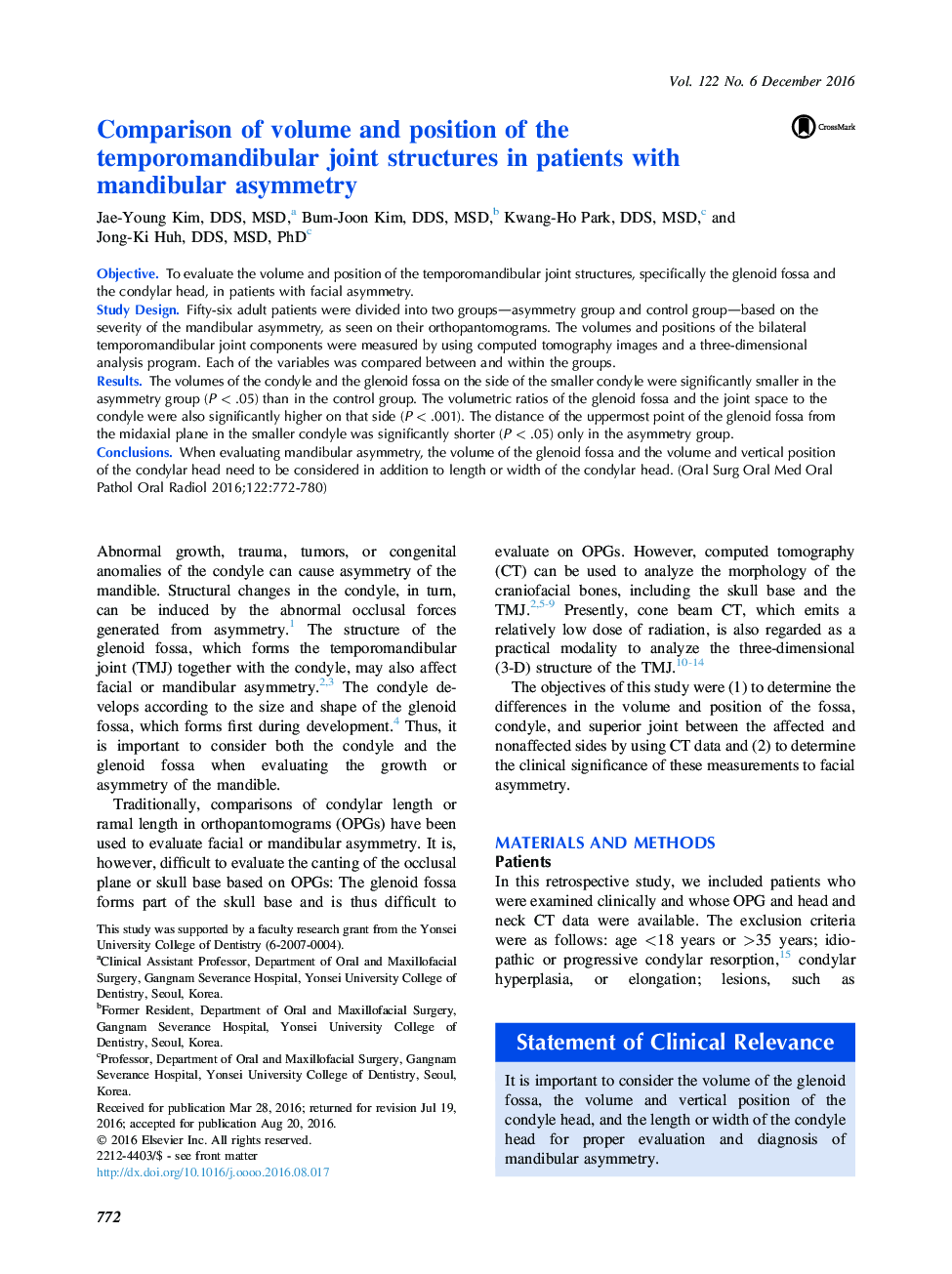| Article ID | Journal | Published Year | Pages | File Type |
|---|---|---|---|---|
| 5643064 | Oral Surgery, Oral Medicine, Oral Pathology and Oral Radiology | 2016 | 9 Pages |
ObjectiveTo evaluate the volume and position of the temporomandibular joint structures, specifically the glenoid fossa and the condylar head, in patients with facial asymmetry.Study DesignFifty-six adult patients were divided into two groups-asymmetry group and control group-based on the severity of the mandibular asymmetry, as seen on their orthopantomograms. The volumes and positions of the bilateral temporomandibular joint components were measured by using computed tomography images and a three-dimensional analysis program. Each of the variables was compared between and within the groups.ResultsThe volumes of the condyle and the glenoid fossa on the side of the smaller condyle were significantly smaller in the asymmetry group (P < .05) than in the control group. The volumetric ratios of the glenoid fossa and the joint space to the condyle were also significantly higher on that side (P < .001). The distance of the uppermost point of the glenoid fossa from the midaxial plane in the smaller condyle was significantly shorter (P < .05) only in the asymmetry group.ConclusionsWhen evaluating mandibular asymmetry, the volume of the glenoid fossa and the volume and vertical position of the condylar head need to be considered in addition to length or width of the condylar head.
